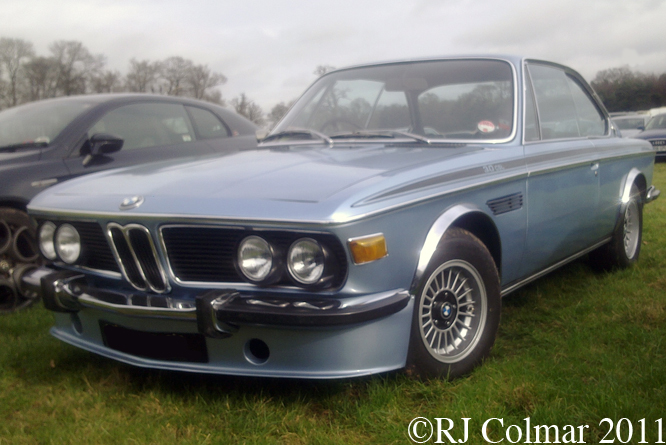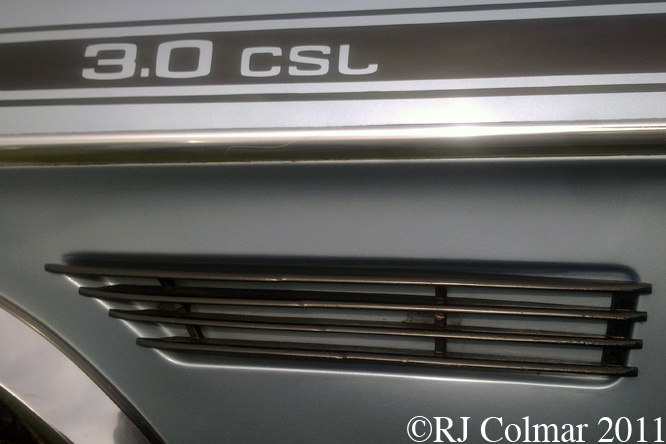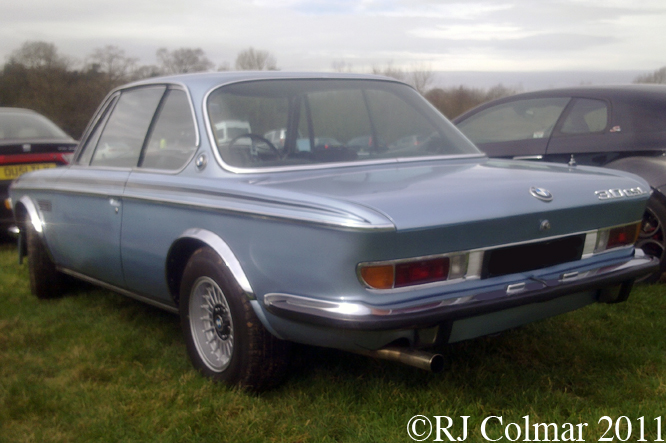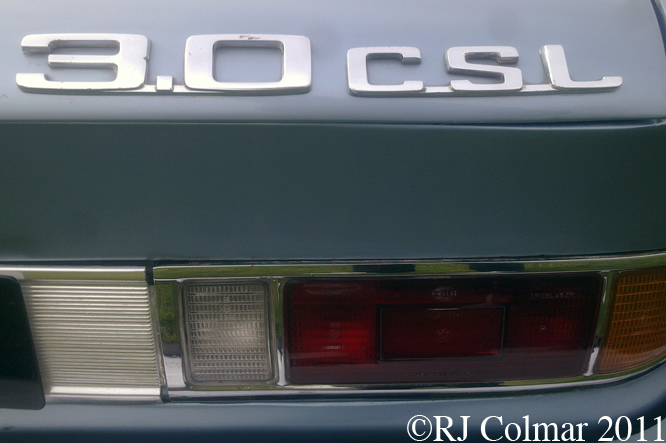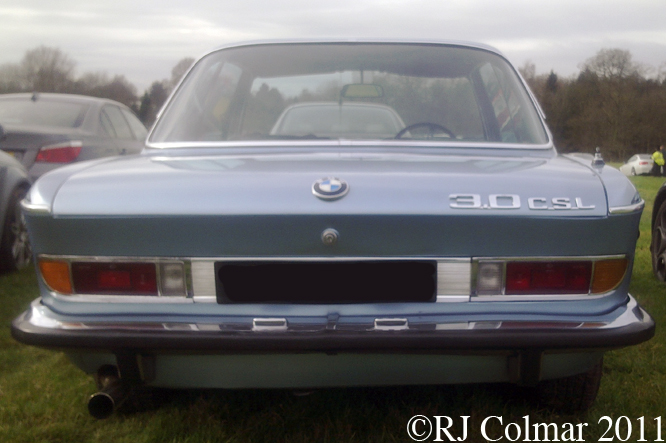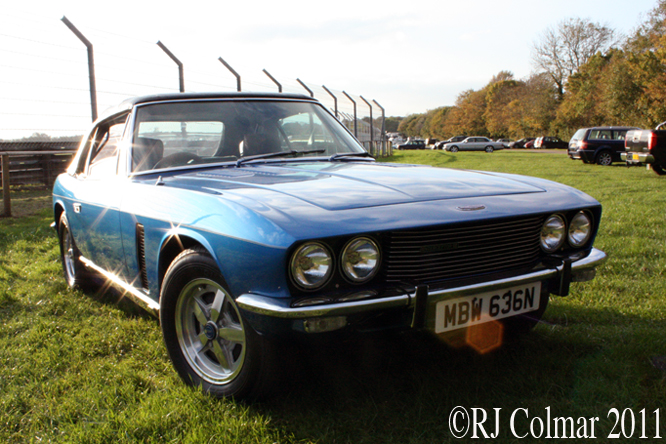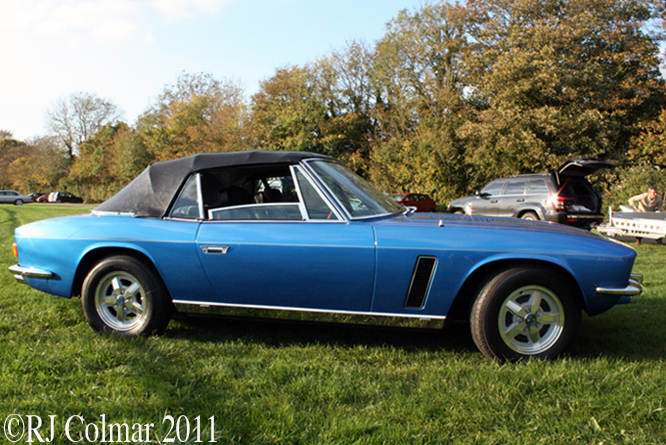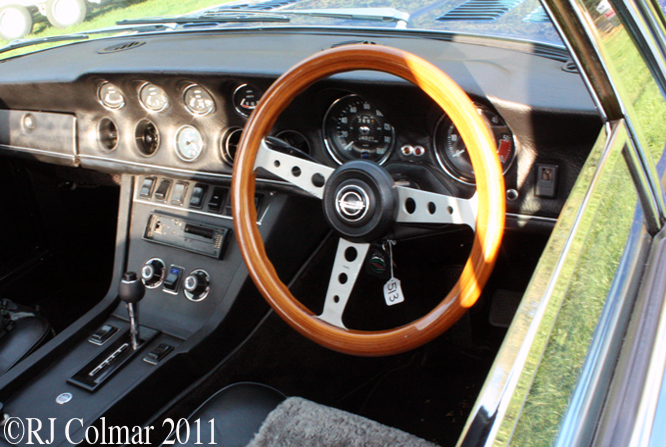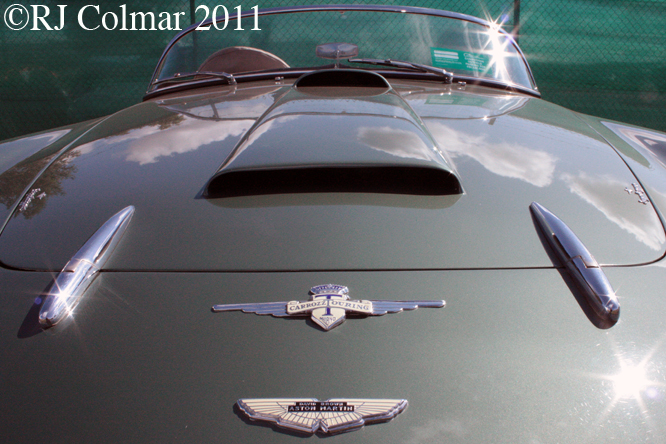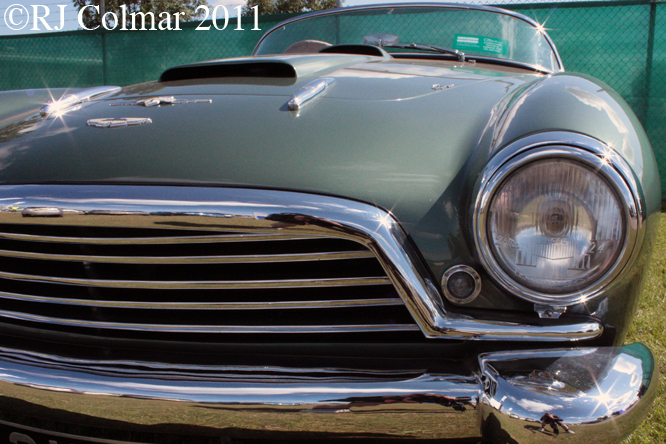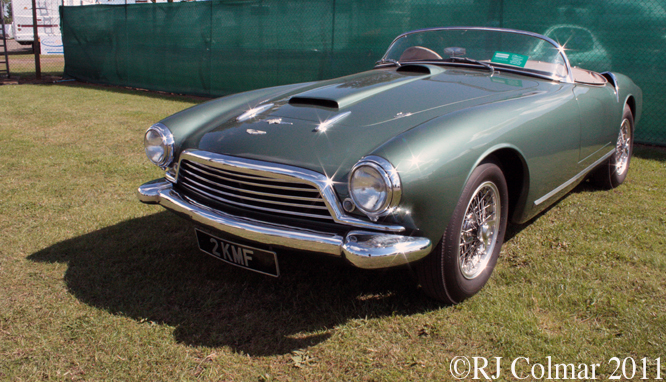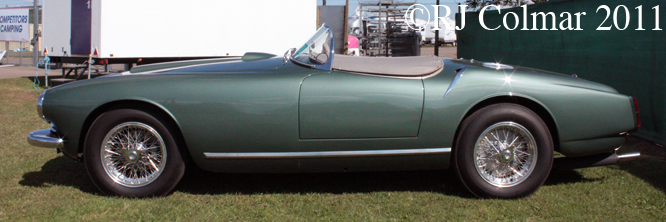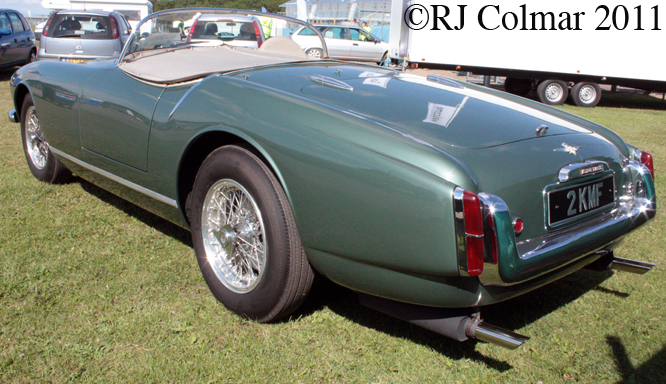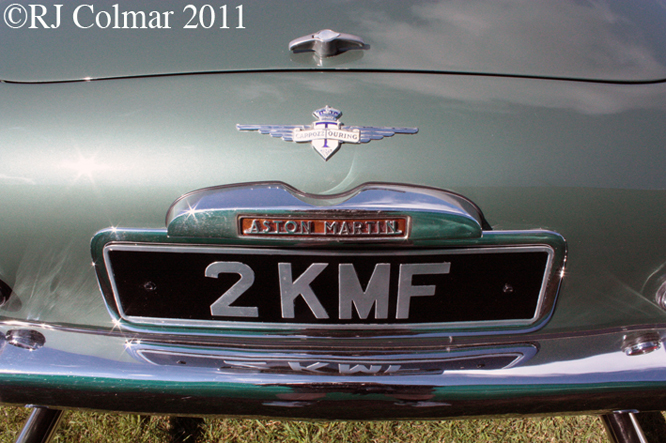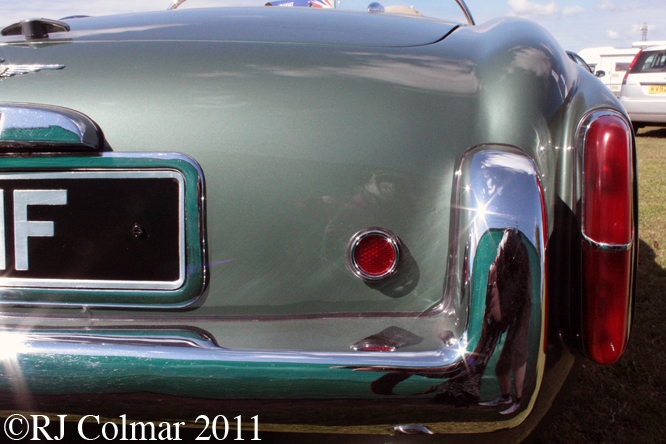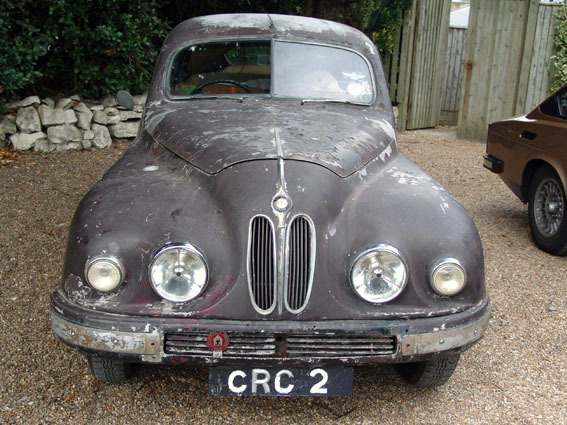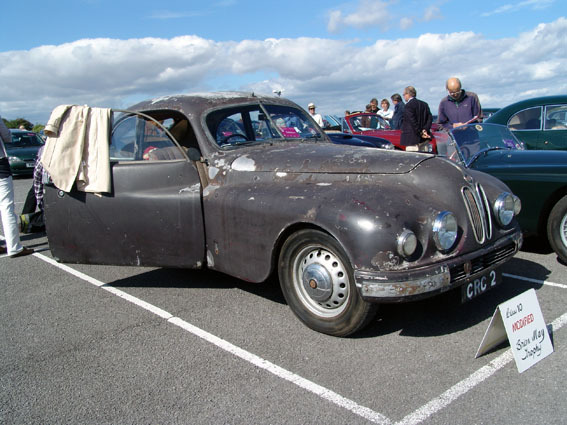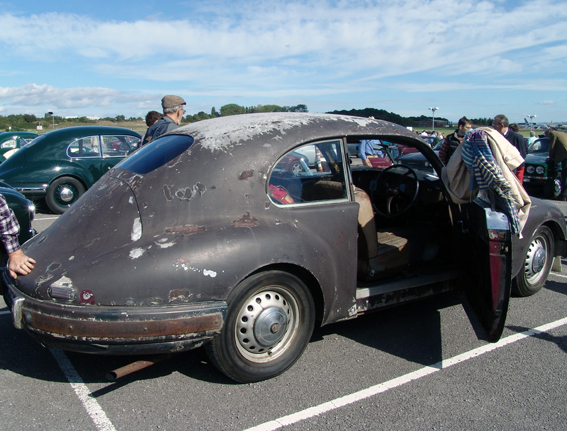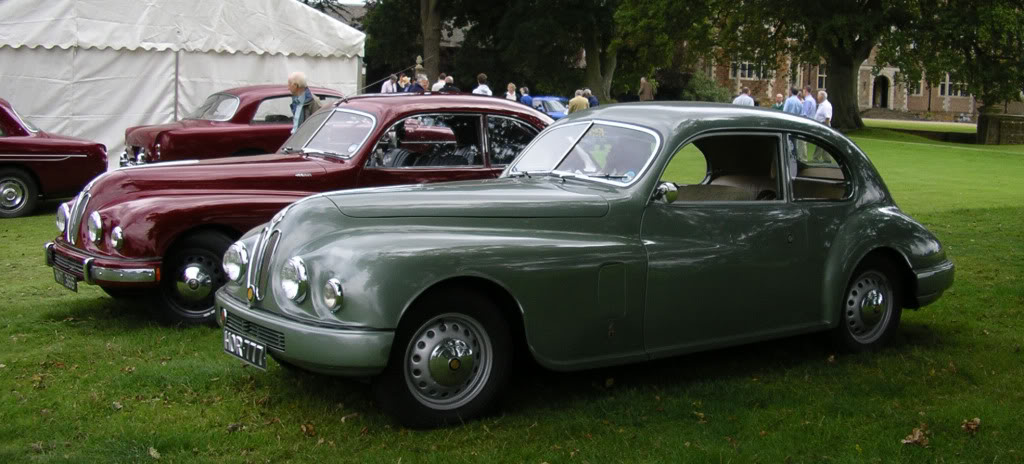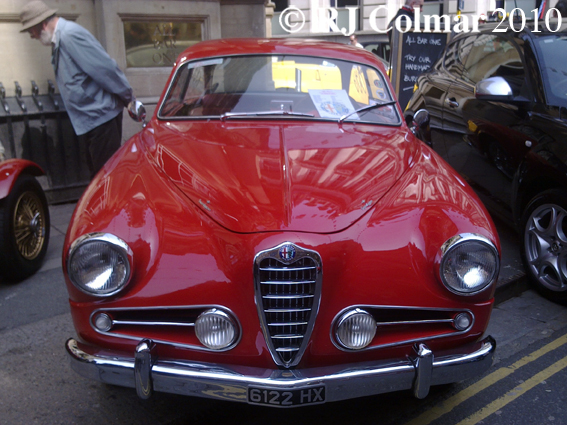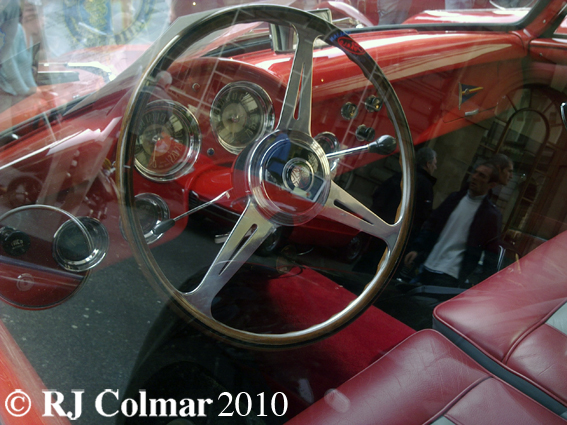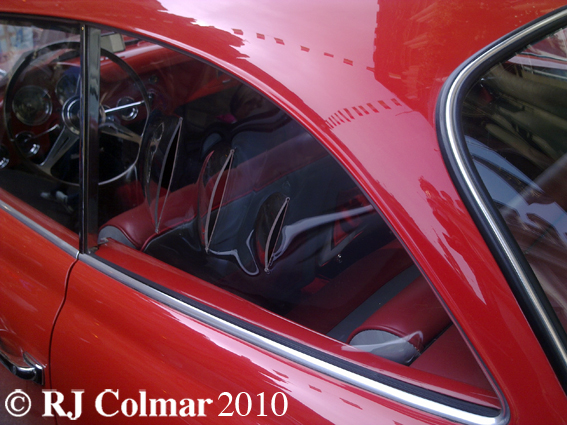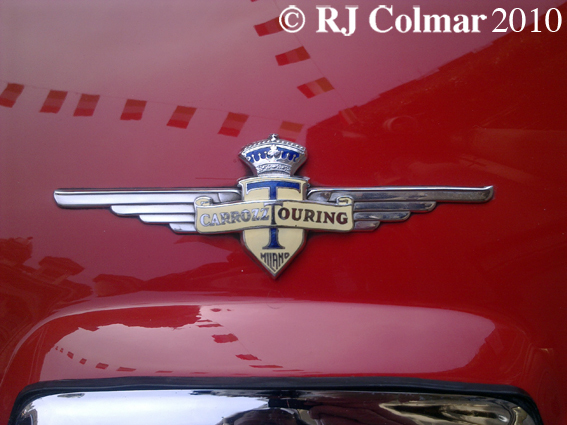In May 1972 BMW launched the lightweight variant of the CS model based on the E9 platform known as the BMW 3.0 CSL with the L denoting ‘light’ = leicht in German.
The the CSL was a homologation special the purpose of which was to allow a higher specification racing cars to be built. It would appear the car shown here is one of the earliest CSL’s built fitted same 200 hp 2,986 cc / 182.2 cui motor as the CSi model. Over time the CSL was fitted with larger motors to be eligible for the over 3 litre / 183 cui class.
Light weight features included thinner steel body, deleting trim and sound proofing, using aluminium alloy doors, bonnet / hood, boot / trunk lid and perspex side window’s.
BMW’s UK importer however insisted that the 500 CSL’s imported to the UK retain the soundproofing, electric windows and bumpers from the stock CSi meaning UK CSL’s are a higher specification than all other CSL’s and also no quite so light weight.
The final version of the CSL from July 1973 featured a 3,153 cc / 192.4 cui six cylinder motor and a variety of aerodynamic aids both front and rear which led to the model being nicknamed the Batmobile.
In 1973 Dutchman Tonie Hezemans driving a BMW CSL was crowned European Touring Car Champion securing the manufacturers title for BMW. 3.0 CSL’s would continue winning European Touring car races every year all the way through to 1979 with eight drivers sharing championship spoils between 1975 and 1979 securing a further 5 European Touring Car Manufacturers Championships for BMW.
Thanks for joining me on this ‘Not So Lightweight’ edition of ‘Gettin’ a li’l psycho on tyres. I hope you will join me again tomorrow. Don’t forget to come back now !

